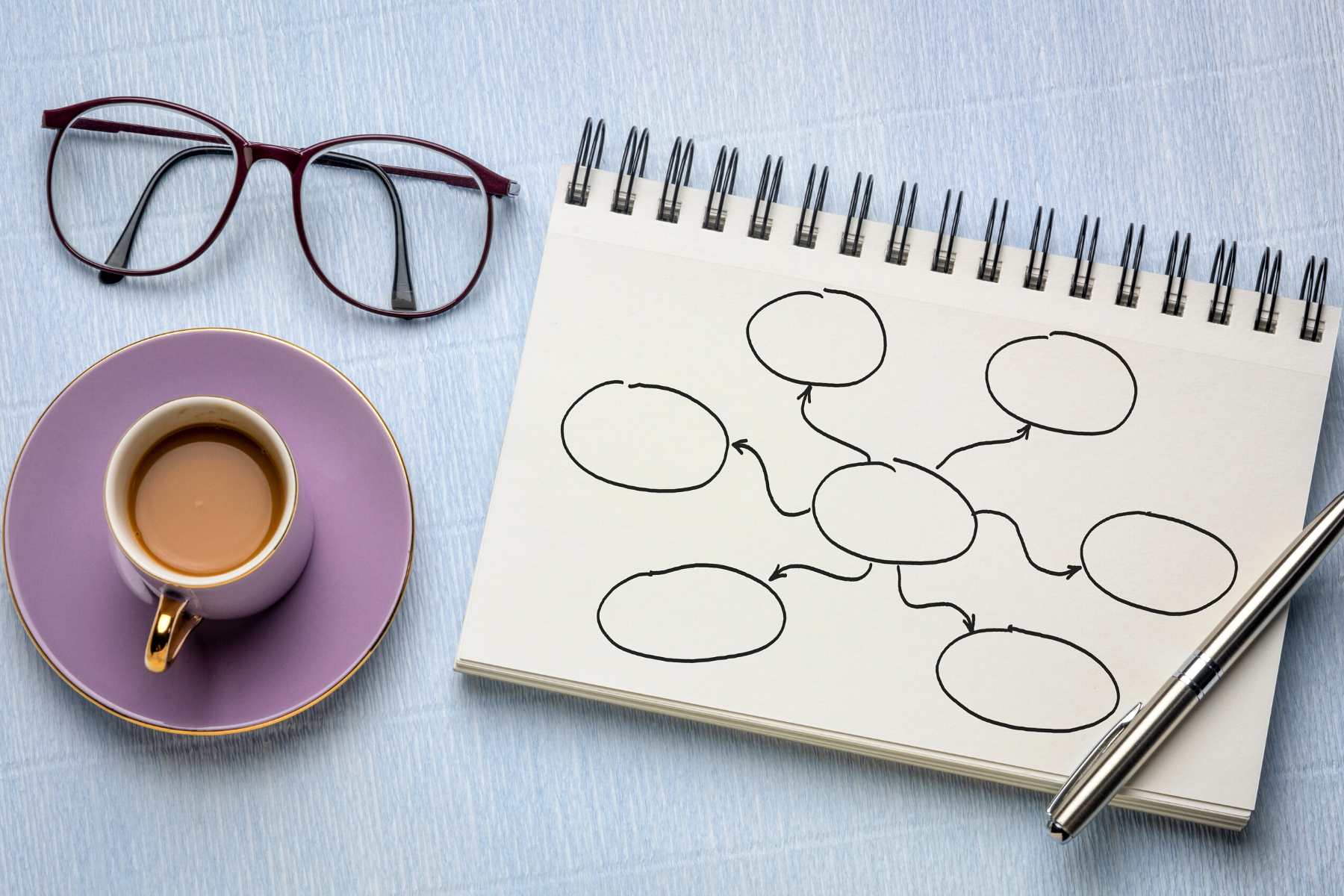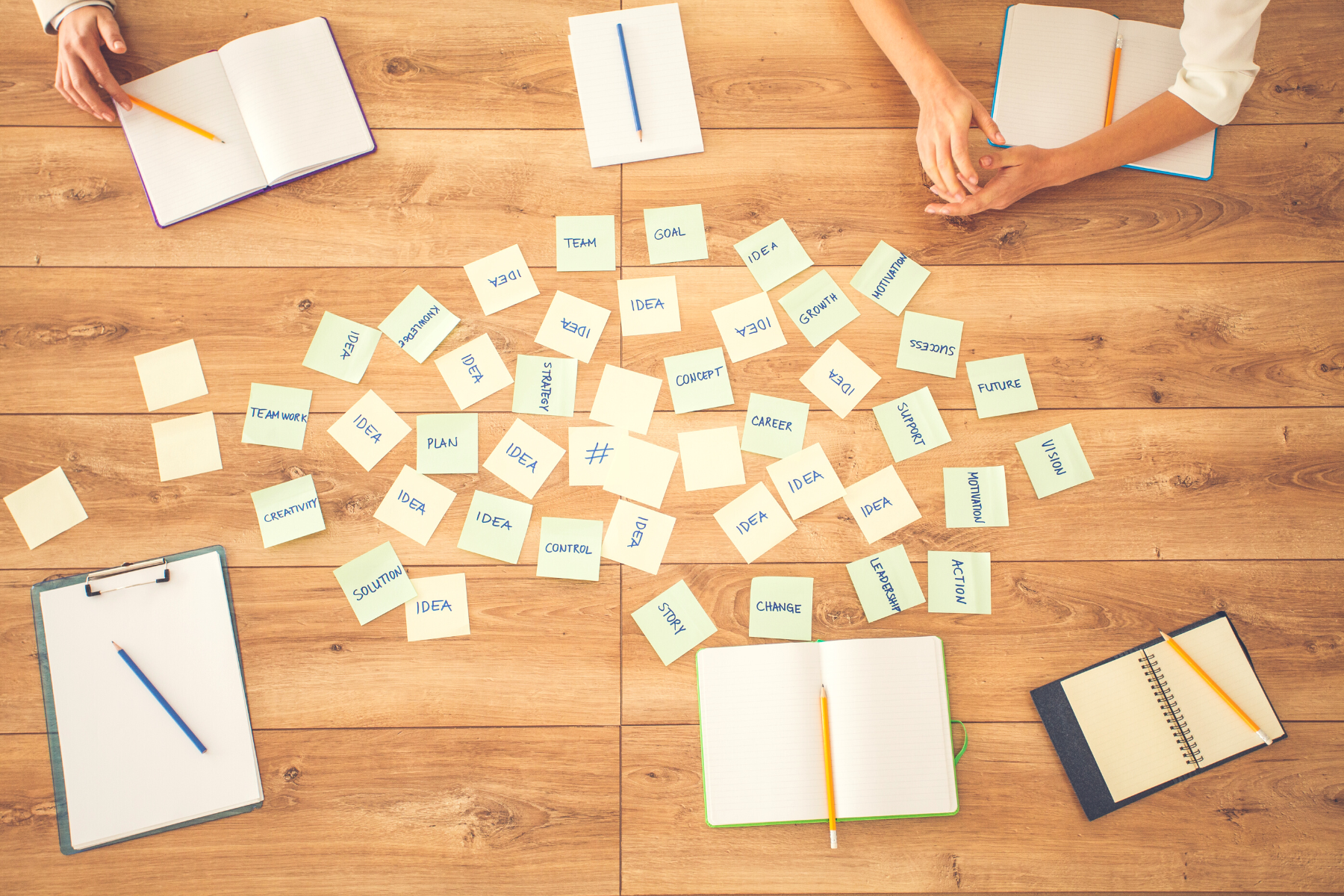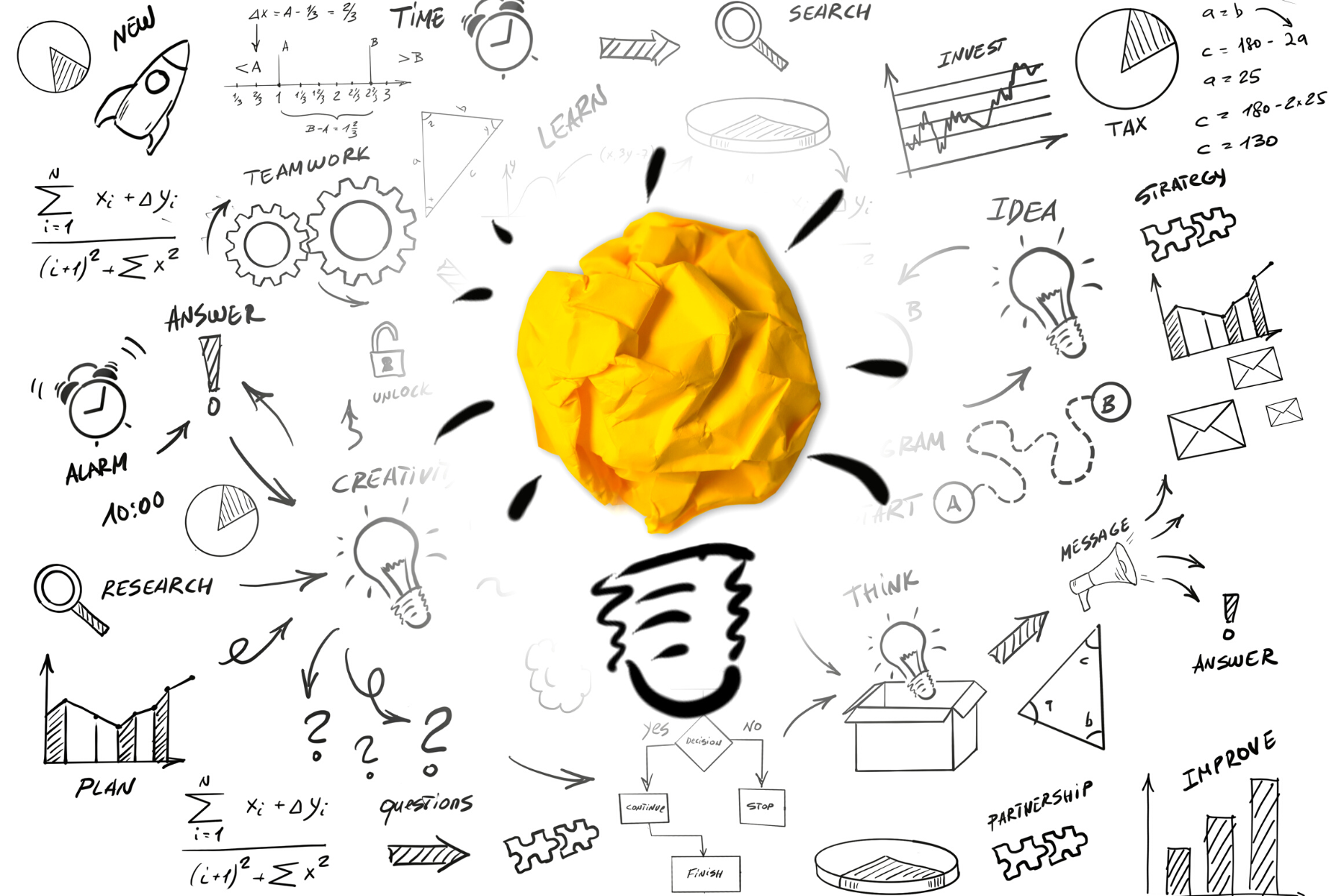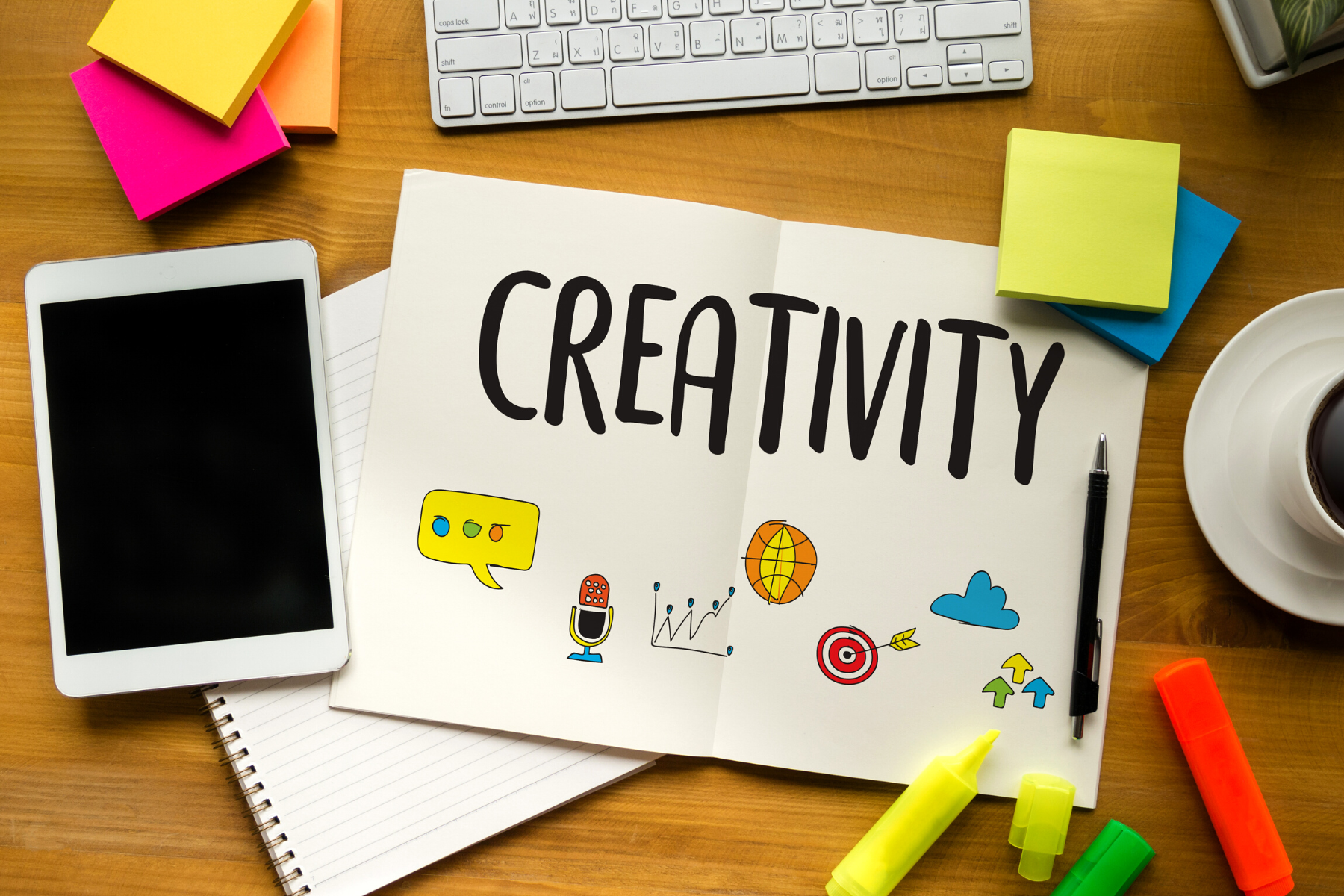Creative thinking is essential for any artist, regardless of their medium.
It is what allows you to come up with fresh ideas and push the boundaries of your work.
This is why brainstorming has become such an integral part of the creative process.
Brainstorming helps to open the door to new possibilities and can give you insights that you may have never considered before.
Let's take a closer look at what brainstorming is and how it can help unlock your creativity.



How to Think Creatively
Creative thinking is important for any type of artist.
It is the process of coming up with new ideas and pushing the boundaries of your work to create something unique.
Creativity is often seen as something that comes naturally, but it can be learned and practiced.
Creative thinking requires an open mindset and the willingness to explore new ideas.
It involves looking at a problem or task from multiple angles and taking risks in order to find something unique.
The brainstorming process can help you think outside the box and come up with fresh ideas.



What Is Brainstorming?
Brainstorming is a creative problem-solving technique that encourages divergent thinking—the ability to come up with many different solutions or ideas in response to a single issue or question.
Unlike convergent thinking, which involves narrowing down options and coming up with one solution, brainstorming encourages exploration and experimentation as ways to generate new ideas.
It's all about creating processes tailored to develop unique solutions and innovation skills.
Brainstorming is used in many different contexts and by a variety of professionals.
It is often used in business settings as a way to generate new ideas or solutions, but it can also be a useful tool for writers, artists, and anyone looking to unlock their creativity.
You might be an individual artist, part of a school or studio, or corporation looking for attractive market gaps to get sustainable top line growth, creative the core business key is creative brainstorming.
Regardless of whether you're using it as an individual or part of a business model with market and finance teams, brainstorming can help you gain an in-depth understanding of a problem you're trying to solve, such as economic feasibility for packaging design guidelines, and make the most out of your creative thinking skills.



Brainstorming Techniques
There are many different techniques that can be used during a brainstorming session.
These include:
- Mind mapping
This is the process of creating a visual representation of ideas or information.
It involves mapping out thoughts and ideas in an organized manner, often with words or images.
This can help to stimulate creative thinking and make it easier to see relationships between different concepts.
- Brain-writing
This is a technique in which participants write down their ideas without speaking them out loud, using a notebook, piece of paper, or art journal.
This can be done individually or as a group and can be used to generate new ideas or build on existing ones.
- Listening
This involves actively listening to others’ ideas and building on them.
It is a great way to spark conversation and create a collaborative atmosphere.
If you're a business, listen to your customers, using unique consumer insight strategies to gather data, new ideas, and market categories adjacent to your current sections.
- Group discussion
This involves bringing together a group of people to discuss an issue or question and generate new ideas.
It is an effective way to generate a variety of perspectives and come up with unique solutions and growth direction.
These are just a few of the many brainstorming techniques that can be used to help unlock creativity.



The Benefits of Brainstorming
When done correctly, brainstorming can be extremely beneficial for unlocking creativity and discovering innovative solutions.
Here are just a few of the benefits of brainstorming:
- Expands Your Thinking
Brainstorming helps you think outside the box by allowing you to explore different angles, perspectives, and solutions that may not have been considered before.
- Stimulates Creativity
By encouraging divergent thinking, brainstorming can stimulate your creativity and help you come up with original ideas that are unique to you.
- Generates New Ideas
Brainstorming helps generate new ideas by combining existing concepts in novel ways or looking at things from a different point of view.
- Boosts Morale
The collaborative nature of brainstorming makes it an enjoyable experience that can boost morale among team members while also helping them grow closer together as they work towards common goals.



How to Brainstorm Creatively
Brainstorming can be an effective way to unlock creativity and generate new ideas, but it is important to do it correctly in order for it to be successful.
Here are some tips for brainstorming creatively:
- Start with a Problem or Question
Before you begin brainstorming, make sure you have a clear understanding of the problem or question you are trying to solve.
Having a specific focus will help guide your brainstorming session and ensure that your ideas are relevant and applicable.
- Gather a Group of People
Brainstorming is best done in groups, as the collective input can help generate new ideas and push the boundaries of your work.
Make sure to include people with diverse backgrounds, perspectives, and experiences in order to get the most out of your brainstorming session.
Your creative and design teams create better when they collaborate.
- Suspend Judgment
In order to get the most out of your brainstorming session, it is important to suspend judgment and not criticize any ideas that come up, as this can stifle creativity.
Belief systems can either hinder the process of coming up with new ideas or help you, so silence your inner critic during the idea generation phase.
Instead, allow everyone to express their ideas without fear of criticism or ridicule.
- Encourage Wild Ideas
Creative thinking is often about pushing the boundaries and coming up with unconventional solutions, so it is important to encourage wild and far-fetched ideas during your brainstorming session.
These ideas may seem too outlandish at first, but they can often lead to innovative solutions.
- Take Breaks
Brainstorming sessions can become overwhelming if you spend too much time on them, so it is important to take regular breaks throughout the process in order to refresh your mind.
Taking a few minutes away from the session can help clear your head and make it easier for you to come up with new ideas.
- Record Your Ideas
It is important to record all ideas that come up during your brainstorming session, as even the most outlandish ones may lead to something useful.
Make sure to write everything down and save it for later in case you need to refer back to any of the ideas.
By following these tips, you will be able to make the most out of your brainstorming session and unlock your creativity.



Using Brainstorming to Think Creatively
Brainstorming is an invaluable tool for any artist looking to unlock their creativity and discover new solutions or ideas for their work.
By encouraging divergent thinking and collaboration among team members, it’s possible to generate innovative concepts that would otherwise remain out of reach.
Brainstorming can also be an enjoyable experience that boosts morale and brings team members closer together.
By following the tips outlined above, you can ensure that your brainstorming sessions are productive and creative.
So, next time you find yourself stuck in a creative rut, try out some brainstorming techniques to help get those creative juices flowing!



Interested in learning more about generating ideas? Check out this TEDx Talks' video!
Want even more content about creativity and art?
Be sure to check out all of our creative chronicles!
-Using inspirational music for creativity
-Building creative confidence in your abilities










